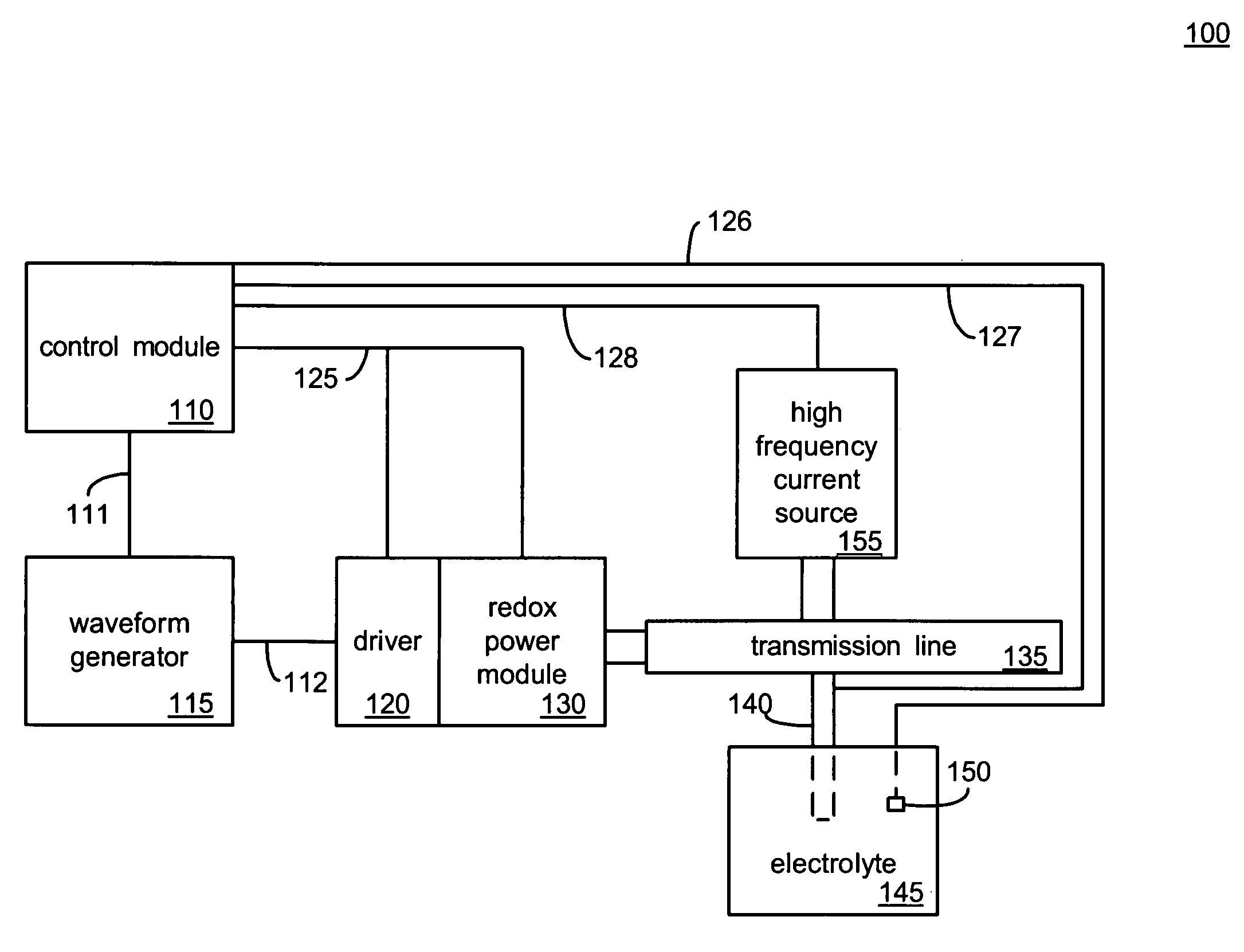System and method for isotope selective chemical reacations
a chemical reacation and isotope technology, applied in the field of chemical reactions, can solve the problems of difficult to recover unstable products, difficult to make use of unstable intermediate complexes or recover unstable products, and many of these reactions cannot be used in conventional separation processes
- Summary
- Abstract
- Description
- Claims
- Application Information
AI Technical Summary
Benefits of technology
Problems solved by technology
Method used
Image
Examples
Embodiment Construction
[0078]FIG. 1A shows a block diagram 100 of an embodiment of an electrolytic cell interphase control system. A bus 111 couples a control module 110 to a waveform generator 115. The control module 110 transmits signals to the waveform generator 115 that set the parameters of an output waveform (e.g., duty cycle, amplitude, and period). The bus 111 may also provide feedback to the control module 110 with respect to the output of the waveform generator 115. The output waveform of the waveform generator 115 may include a unipolar signal that has a positive excursion referenced to ground and / or a bipolar signal with positive and negative excursions.
[0079]The waveform generator 115 is coupled to a driver 120 by a signal bus 112. The bus 112 may couple two nodes and carry a single waveform as the output of the waveform generator 115, or it may carry a number of distinct signals between more than two nodes. In a preferred embodiment the driver 120 is driven by an input signal in the range of...
PUM
| Property | Measurement | Unit |
|---|---|---|
| Time | aaaaa | aaaaa |
| Frequency | aaaaa | aaaaa |
| Frequency | aaaaa | aaaaa |
Abstract
Description
Claims
Application Information
 Login to View More
Login to View More - R&D
- Intellectual Property
- Life Sciences
- Materials
- Tech Scout
- Unparalleled Data Quality
- Higher Quality Content
- 60% Fewer Hallucinations
Browse by: Latest US Patents, China's latest patents, Technical Efficacy Thesaurus, Application Domain, Technology Topic, Popular Technical Reports.
© 2025 PatSnap. All rights reserved.Legal|Privacy policy|Modern Slavery Act Transparency Statement|Sitemap|About US| Contact US: help@patsnap.com



